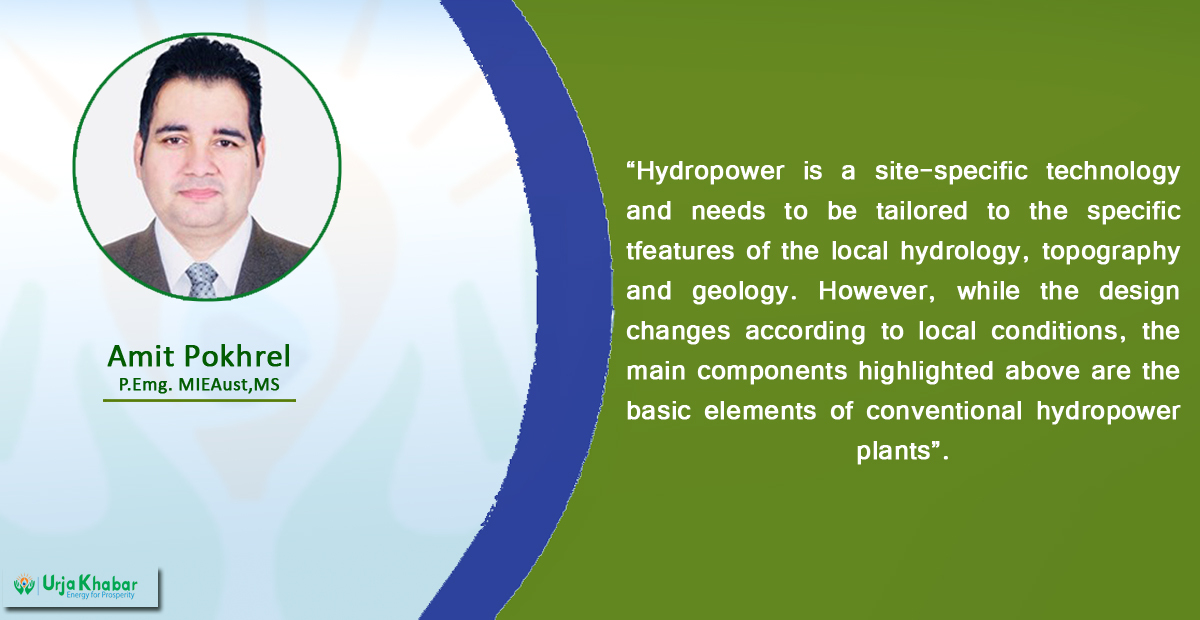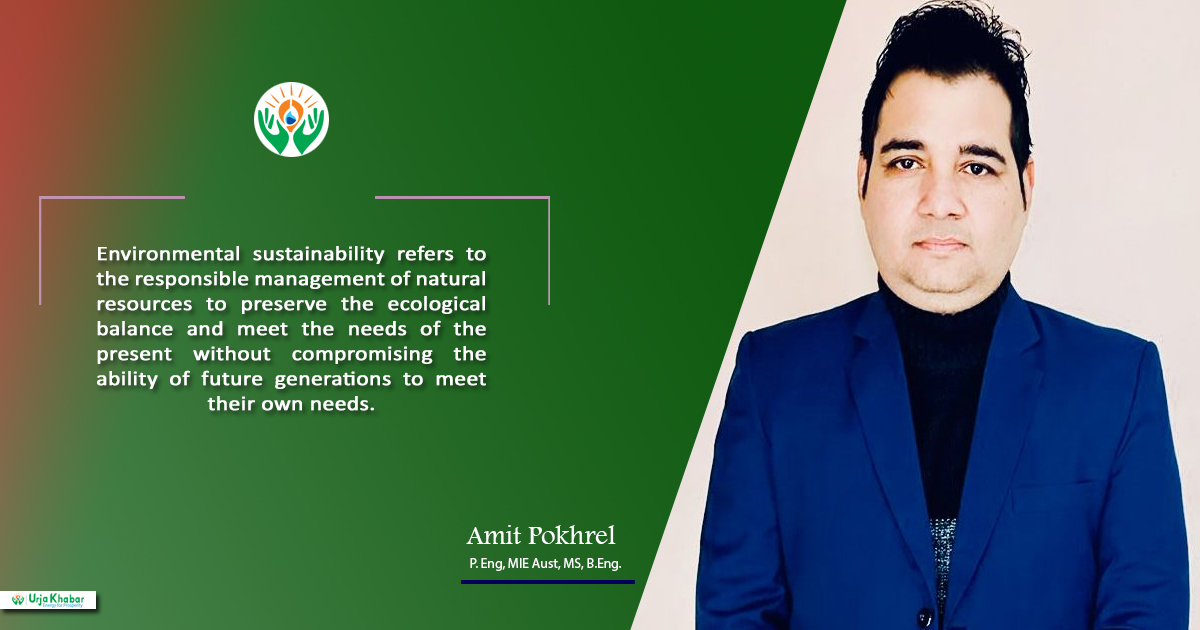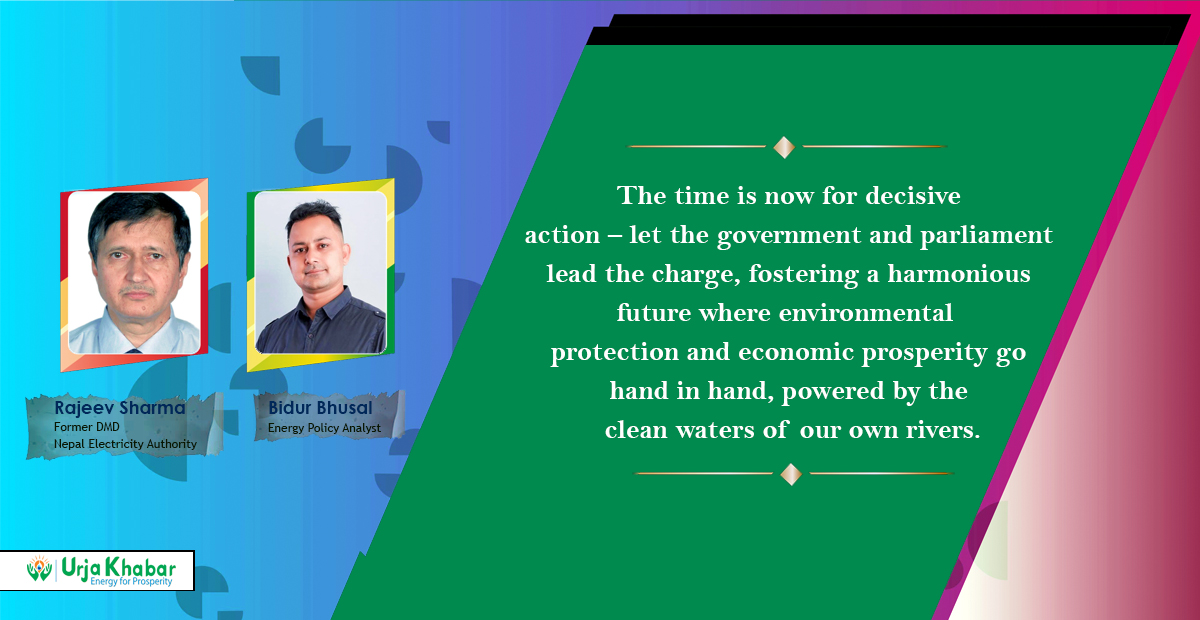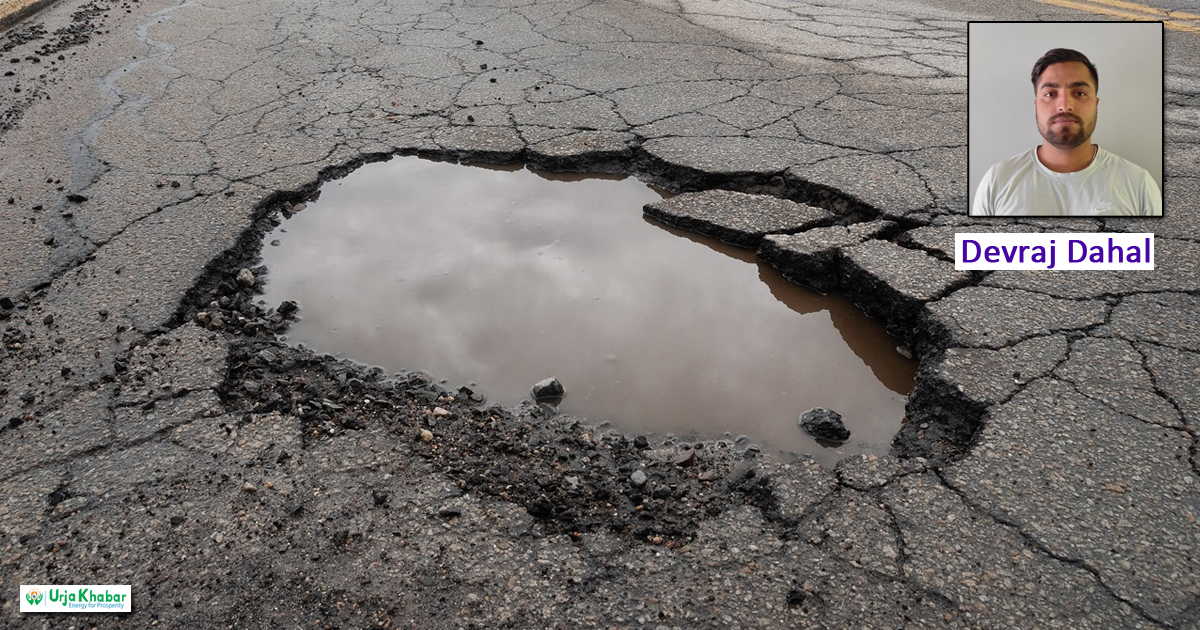Energy Update
Hydropower: Fueling Sustainable Socioeconomic Growth

Nepal is blessed with precious water resources that accounts for enormous hydroelectric potential. The perennial nature of rivers and steep gradients of country’s topography provide an ideal condition for the development of hydroelectric projects. As world population continues to grow and the limited amount of fossil fuels begins to diminish, there is an increasing demand to exploit renewable sources of energy. However, as hydropower schemes are often part of a multipurpose water resources development project, they can often help to finance other important functions of the project (IEA Hydro, 2000). In addition, hydropower provides benefits that are rarely found in other sources of energy.
In fact, dams built for hydropower schemes, and their associated reservoirs, provide human well-being benefits such as securing water supply, flood control, and irrigation for food production and societal benefits such as increased recreational activities and improved navigation. Furthermore, hydropower, due to its associated reservoir storage, can provide flexibility and reliability for energy production in integrated energy systems.

The storage capability of hydropower systems can be seen as a regulating mechanism by which other diffuse and variable renewable energy sources (solar) can play a larger role in providing electric power of commercial quality. While development of all the remaining hydroelectric potential could not hope to cover total future world demand for electricity, implementation of the remaining potential can make a vast contribution to improving living standards in the developing world, where the greatest potential still exists. Minimizing water consumption for producing hydropower is critical given that overuse of flows for energy production may result in a shortage of flows for other purposes such as irrigation.
Given its dependence on water availability, the impacts of climate change on hydropower are obvious, whereby run-of-river plants are more sensitive to changes in river flows than storage plants. As a consequence of climate change related risks, a diversification in terms of fuels and energy sources as well as centralized and decentralized technologies will be key for the development of a generation portfolio that is resilient to more variable climatic conditions. This implies a larger contribution of “new” renewable energy sources not depending on water availability and water temperature. Hydropower, a renewable and mature energy source utilizes water from higher to lower altitude to generate power.

Hydropower is one of the proven, predictable and cost-effective sources of renewable energy. Hydropower system comprises of hydro source, diversion/storage system, water conductor system (channel/tunnel/penstock), power house building, generating and control equipment. Hydropower is technically mature and is usually economically competitive under liberalized market conditions. It also provides significant benefits to the whole power system; in fact, the fast response capabilities provided by reservoirs and pumped storage plants provide critical energy to electricity networks, helping to match fluctuations in electricity demand and supply from intermittent and less flexible electricity sources. Moreover, since hydropower is situated at the crossroads of two major issues for development, water and energy, hydro reservoirs can often deliver services beyond electricity supply. Hydro storage capacity can mitigate freshwater scarcity by providing security during low flows and drought for drinking water supply, irrigation, and flood control and navigation services.
Multipurpose hydropower projects may have an enabling role beyond the electricity sector to secure freshwater availability. In addition, hydropower is a controllable (or dispatchable) renewable energy source. This is in part due to control over the source through its storage capabilities, and the greater predictability of its generation in comparison to solar power. Hydropower is, however, variable over longer time scales, as it depends on precipitation and water run-off. At a regional level, climate change may affect the potential for power generation (even if there is no clear pattern across Nepal), but at the same time its role in water management using reservoirs can contribute to mitigating negative effects in term of water availability.
Overall, hydropower has great potential to enable the transition towards a decarbonized economy to mitigate the negative effects of climate change (by storing and supplying water). Environmental issues related to the impact on the flow regime upstream and downstream of dams and reservoirs, barriers to fish migration, loss of biodiversity and the alteration of river morphology are also a matter of concern. The hydropower industry has been making significant efforts to mitigate the negative effect on the environment of hydropower plant and considerable improvements have been implemented in recent years. Although significant progress has been made in addressing these issues, there is still a low level of awareness among the developers and general public regarding these achievements.
Hydropower is based on a very simple physical concept. Hydropower plants convert the potential or gravitational energy of water first into mechanical and then into electrical energy: the flow of water turns a turbine, which is connected to a generator. The electricity generated then flows to a substation, where the voltage is increased, and is then distributed to the end user or fed into the power grid. Hydropower is a renewable energy as it is based on the water cycle, which is an endless, constantly recharging system.
Hydropower is a site-specific technology and needs to be tailored to the specific features of the local hydrology, topography and geology. However, while the design changes according to local conditions, the main components highlighted above are the basic elements of conventional hydropower plants. Gates are barriers that allow to regulate water release. They can take different forms, such as fixed wheel gates, sliding gates, radial gates, and caterpillar gates, and they are used for power intakes, bottom outlets, or river diversion works. Spillway gates are also used to control flood discharge in reservoirs.
When gates on the dam open, water flows down the penstock to the turbine, usually through a shut-off valve. The penstock is a conduit or pipe that conducts water from the intake to the powerhouse. Penstocks are usually made of steel and they must be able to withstand high pressures on the inside surface in the event of a sudden increase or decrease in the load - the so-called water hammer. If the powerhouse is located far from the dam and reservoir, water is transferred by open channels, tunnels under pressure, or pressure shafts, which depending upon the rock type can be unlined, lined with concrete or steel lined.
Sufficient water head should be available above the intake entrance to avoid the formation of vortices which may carry air into the penstock and result in problems with turbine operation. A surge tank is often introduced in the system between the water intake and the powerhouse to absorb any water surges caused in the penstock or pressure tunnel due to the sudden loading and unloading of the generator through opening and closing of the inlet valve and wicket gates. The wicket gates of the turbine allow regulation of the amount of water that flows into the turbine. The turbine is the machine that converts the kinetic/potential energy of water into mechanical energy. It is attached by way of a shaft to the generator, which transforms the mechanical energy of the turbine into electric energy.
The turbine and the generator are at the heart of the hydroelectric power plant. Electricity is generated by the rotating magnetic field created by the spinning rotor, a series of large electromagnets, inside a tightly wound coil of copper wire, called the stator. The alternating current thus produced is transferred to the transformer, which converts it to a higher voltage. Finally, the high voltage electricity is transmitted to the power line. The water that passed the turbine flows through the draft tube into the tailrace channel and re-enters the river downstream.
In addition, the amount of energy that a hydropower plant can generate is proportional to the product of the hydraulic head and the flow rate. The Hydraulic head is the difference in water levels between the intake and the discharge point of the installation. Water flow (or discharge) is the volume of water, expressed as cubic meters per second, passing a point in a given amount of time. The greater the hydraulic head and rate of water flow, the greater the potential energy that can be converted to electricity. Hydropower plants with low flows require high head, while plants with low head require high flows to generate the same amount of electrical energy. Due to the higher water pressure, higher heads also allow a higher flow rate through a smaller turbine thus reducing the cost of the equipment. Different types of turbines have been developed, such as Pelton, Francis and Kaplan to mention the most commonly used, in order to have the highest efficiency in power generation for different ranges of head and flow.
In Nepal’s context, the Run-off-River projects are developed. Hydropower projects present multiple opportunities to create environmental and socio-economic value for their communities and regions. Through multipurpose schemes, hydropower reservoirs can contribute to appropriate water management, including water supply, flood and drought management, irrigation, navigation, fisheries, environmental services and recreational activities. Dams have often been built to serve only one of the above-mentioned purposes. Promulgation of hydropower development policy has profoundly encouraged the national and international entrepreneurs to be engaged in the development of hydropower projects of different capacities.
Development process of hydropower projects covers system planning, design and layout phases. The system planning and design including optimization of different hydropower projects under similar categories differed in depth and extension of studies carried out. Hence, it is being realized that power system optimization guidelines are needed to assist the planers/promoters of hydropower projects. The guidelines will help various public/independent power producers to follow a uniform, consistent and converging approach for optimization study during planning, design and analysis of hydropower projects at the feasibility level of studies in the Nepalese context.
The guidelines will provide information about all types of analytical procedures and relevant values that are needed for power system optimization of hydropower projects in the Nepalese context. The intended users will be hydropower developers or agencies including public/private sectors and professional personnel of relevant agencies working in the hydropower sector.
The Author of this article works as a Senior Contract and Project Expert in the Energy Business of Golyan Group.
Reference
1. guidelines-for-power-system-optimization-of-hydropower-projects.pdf (doed.gov.np)
2. Http://www.linkedin.com/in/eramitpokhrel personal profile
3. Guidelines-for-Study-of-Hydropower-Projects.pdf (pmp.gov.np)
4. Hydropower in Nepal: Importance & Potential | StudySmarter
5. Mr. Amit Pokharel is a Senior Contract & Commercial Expert working in the multiple energy projects (Hydropower and Renewable Energy) for Golyan Group in the Energy Department and directly reports to the CEO and MD of the Golyan Group.
6. Microsoft Word - Hydro Article for review 8.deepak.DOC (nrb.org.np)
7. The Role of and Challenges and Prospects for Hydropower Development in Nepal’s Energy Sector – Nepal Economic Forum
8. Hydropower Development and Economic Growth in Nepal (South Asia Working Paper No. 70) (adb.org)
9. Benefits of Hydropower | Department of Energy
10. The Importance of Hydro-power – N-Sci Technologies (nsci.ca)
11. The Important Role of Hydropower in the Energy Transition (hydropower-europe.eu)
12. Hydropower has a crucial role in accelerating clean energy transitions to achieve countries’ climate ambitions securely - News - IEA
Conversation
- Info. Dept. Reg. No. : 254/073/74
- Telephone : +977-1-5321303
- Email : [email protected]














